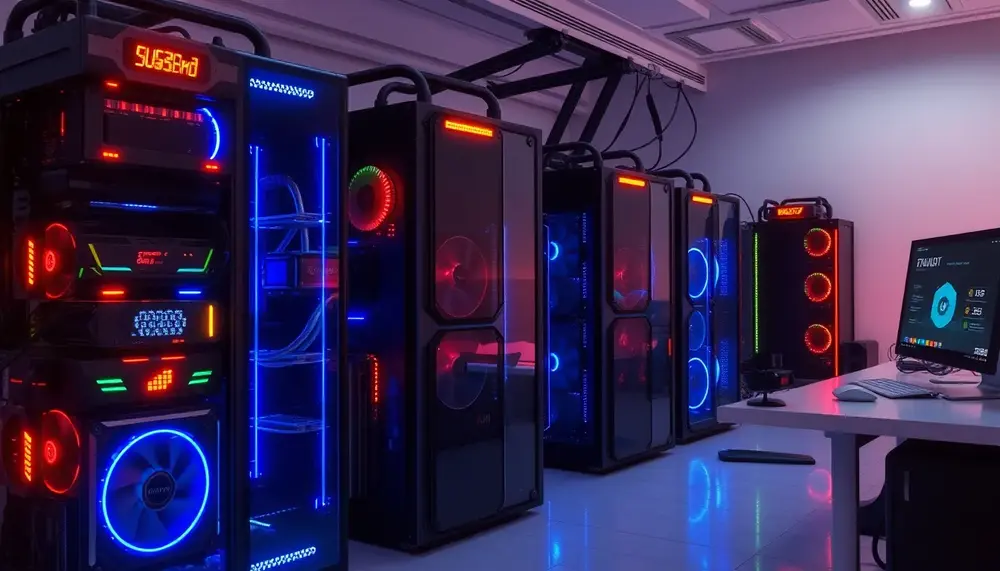Exchange rate
Exchange rate
Defining 'Exchange Rate' in Bitcoin Mining
Always in flux, the exchange rate plays an integral role in Bitcoin mining. It denotes the value of Bitcoin compared to other currencies. For instance, you might see that one Bitcoin equals 30,000 US dollars. However, it can and will shift often.
The Importance of the Exchange Rate in Bitcoin Mining
When the exchange rate is high, you get more money for each Bitcoin mined. Therefore, miners tend to sell their Bitcoins when the exchange rate favors them. If it's low, they might keep the Bitcoins. They hope the rate will climb again before they sell.
Variable Nature of Bitcoin's Exchange Rate
Why does Bitcoin's exchange rate change so much? It's all about supply and demand. If more people want Bitcoins, the exchange rate increases. If they sell their Bitcoins, the exchange rate goes down. Hence, it's crucial for miners to keep an eye on the market trends.
Exchange Rate's Impact on Mining Profitability
The exchange rate affects the profitability of Bitcoin mining. High rates mean high rewards for miners, but the difficulty of mining also increases with rates. This is because more miners are lured into the game. So, a high exchange rate means higher income, but also stiffer competition.
The Role of Bitcoin Exchanges
Bitcoin exchanges also play a vital role in determining the exchange rate. They act as marketplaces where people buy and sell Bitcoins. Therefore, the prices set on these platforms hugely influence the global exchange rate of Bitcoin.
Conclusion
In conclusion, the exchange rate in Bitcoin mining is an essential aspect that all miners need to understand. It's the very thing that dictates the value of their hard-earned Bitcoins and impacts the profitability of their mining endeavors. Therefore, it’s important for miners to continuously monitor the market to make informed decisions and maximize their profits.
Blog Posts with the term: Exchange rate

Verus mining pools leverage the VerusHash algorithm to offer fair and efficient cryptocurrency mining, allowing even those with regular hardware a chance at rewards; choosing the right pool involves considering factors like fees, payment systems, server locations, and community support....

The article explores the best GPUs for efficient Ravencoin mining, highlighting key factors such as hashrate, power consumption, price, cooling and durability, and availability. It recommends top-performing NVIDIA (RTX 3080 Ti, RTX 3090) and AMD (Radeon VII, RX 6800 XT)...

The Kaspa mining calculator is a tool for estimating potential earnings and costs in Kaspa cryptocurrency mining, considering factors like current price, hash rate, electricity cost, and pool fees. It's important to input accurate data regularly due to the volatile...

Kaspa mining offers the potential for profit through participation in a fast, scalable blockchain network by providing computational power to process transactions and secure the chain, with profitability depending on factors like GPU efficiency, electricity costs, and network hash rate....

Litecoin mining involves earning LTC through computational work, and withdrawing these rewards requires understanding wallet compatibility, transaction fees, minimum withdrawal amounts, and security. Successfully transferring Litecoin from a mining pool to your personal wallet necessitates setting up a compatible wallet,...

Bitcoin mining in Nigeria is gaining popularity, driven by the potential profitability of using specialized machines to solve complex puzzles and earn Bitcoin; however, factors such as equipment costs, energy consumption, maintenance expenses, currency fluctuations, import duties, technological advancements, local...

Hashrate measures the speed of solving blockchain puzzles in crypto mining, with KHS (Kilo Hashes per second) indicating how many thousand hashes are processed each second; understanding and optimizing this can enhance mining efficiency by balancing power use and energy...

Zano mining pools allow miners to combine computational power, increasing the chances of solving blocks and earning rewards based on their contribution. The article covers how to maximize profits with Zano mining pools by choosing the right pool, setting up...

Monero hashrate calculators help miners estimate potential earnings by considering factors like hardware hashrate, power consumption, pool fees, network difficulty, and block rewards. By accurately inputting these variables into a calculator, miners can determine if their setup is profitable or...

The Kadena mining calculator is a crucial tool for miners to estimate potential profits and costs, taking into account market data, electricity costs, and hardware performance. Accurate inputs are essential as the calculator helps plan financial aspects of KDA mining...

Kaspa mining, utilizing the BlockDAG protocol and proof-of-work consensus with kHeavyHash algorithm, offers a decentralized approach to cryptocurrency mining that is both energy-efficient and resistant to ASIC centralization. Miners need appropriate hardware like high-quality GPUs or ASICs, stable internet, cooling...

Understanding the USDT mining miner price involves considering factors like hardware costs, electricity expenses, market demand, network difficulty, technological advancements, and regulatory environment. By tracking prices through cryptocurrency exchange websites, industry news, specialized tools such as CoinMarketCap and CryptoCompare, and...

Bitcoin mining is a process that validates transactions and adds new blocks to the blockchain, rewarding miners with new bitcoins while requiring specialized hardware like ASICs. Mining pools help individual miners by pooling resources for more consistent rewards, but profitability...

The article explains that cryptocurrency mining in the USA is considered a taxable event by the IRS, requiring miners to report income and capital gains based on fair market value at receipt. It emphasizes the importance of meticulous record-keeping for...

